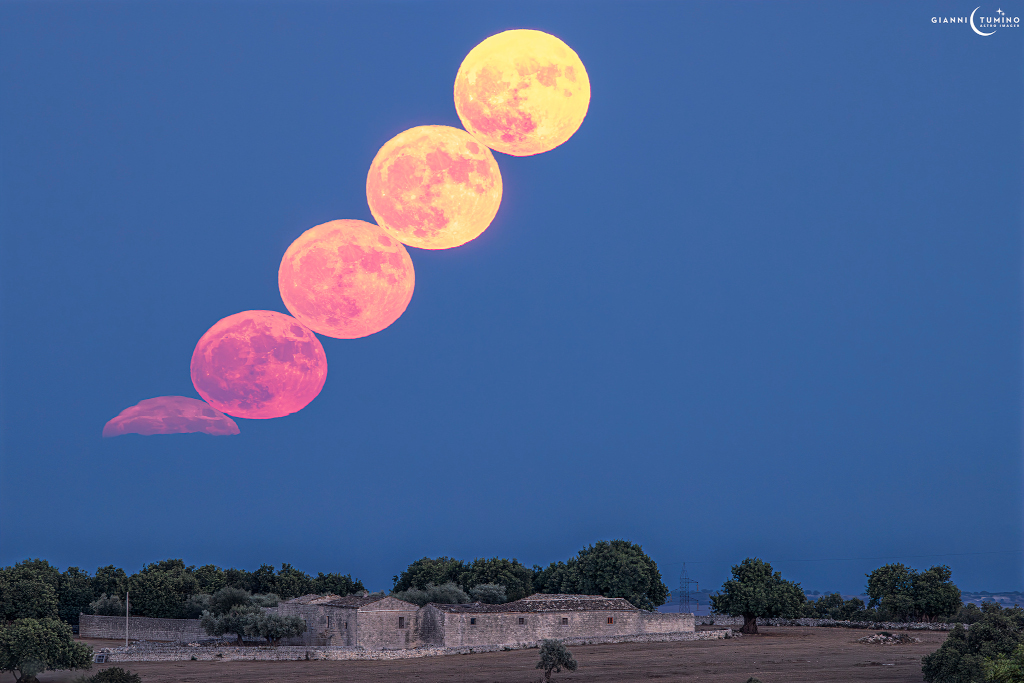Full Moons of August
Discover the cosmos! Each day a different image or photograph of our fascinating universe is featured, along with a brief explanation written by a professional astronomer.
Explanation: Near perigee, the closest point in its almost moonthly orbit, a Full Moon rose as the Sun set on August 1. Its brighter than average lunar disk was captured in this dramatic moonrise sequence over dense cloud banks along the eastern horizon from Ragusa, Sicily. Illuminating night skies around planet Earth it was the second supermoon of 2023. Yet again near perigee, the third supermoon of 2023 will also shine on an August night. Rising as the Sun sets tonight this second Full Moon in August will be known to some as a Blue Moon, even though scattered sunlight gives the lunar disk a reddened hue. Defined as the second full moon in a calendar month, blue moons occur only once every 2 or 3 years. That's because lunar phases take 29.5 days, almost a calendar month, to go through a complete cycle. Tonight an August Blue Moon will find itself beside bright planet Saturn.
Tomorrow's picture: the Crew-7 nebula < | Archive | Submissions | Index | Search | Calendar | RSS | Education | About APOD | Discuss | >
Authors & editors:
Robert Nemiroff
(MTU) &
Jerry Bonnell (UMCP)
NASA Official: Phillip Newman
Specific rights apply.
NASA Web
Privacy Policy and Important Notices
A service of:
ASD at
NASA /
GSFC,
NASA Science
Activation
& Michigan Tech. U.
When you subscribe to the blog, we will send you an e-mail when there are new updates on the site so you wouldn't miss them.

